Masala Library
Masala Library : Restaurant Review
2.5 stars out of 5 (above average)
Mumbai, India
Visited in October 2015
We rely so heavily on sight and sound, but the power of a scent to vividly resurrect a slice of universe from the past is something that all of us would have experienced at some point. Let me start with an example that may trigger your frown rather than your knowing nod : "Chocolate Lux" might not mean much to most of you - back in 2004 , at the same time Kareena Kapoor's glamorous visage was seen frolicking amidst glinting crystalline drops of beach water as a sexy voice crooned "Hey Khuda Hafiz", hoardings across India featured the appetizing vision of her au naturelle form clad in chocolate , as an advertizement for Chocolate Lux soap. The people of India apparently did not like reconciling dessert flavours with ablutional ones so that soap brand was washed out very soon from the production line. But I disagreed - the aroma of that "cake" of soap was strangely alluring and provided me much needed comfort as ferocious exams loomed. Recently, a chocolate rendition somehow recalled that ephemeral soap in my mind and for a brief moment the intervening years collapsed and I was back in the warm washed zeitgeist of a novel bath.
Fear not, my second example is more in line with a restaurant review. From the olfactory dells and peaks of nebulously remembered childhood, I recollect the glorious aroma that seduces one's nostrils as one steps into the portals of restaurants serving 'North Indian' cuisine (pardon the generalizaton). That blended scent of manna huskily speaks of the tandoor, of cream canoodling with noble masalas, of Indian-Chinese creations that achieve a smoky sweet harmony that the two actual countries (planets rather) may never achieve outside a kitchen. That unique aroma , which is most conspicuous on arrival and to which you acclimatize to its near obliteration as the evening passes, I have found only in this genre of restaurants from Trivandrum's Kalavara of yore to Bangalore's otherwise forgettable 24th Main. But I was not interested in expecting these scents when I entered the excellently innovative Indian Accent in Delhi or when I opened the doors of Masala Library in Mumbai. The latter restaurant , which we will discuss from now on, has been positioned as Mumbai's answer to modernist Indian cuisine , so I was prepared to toss out all facets of traditional expectation in a bid to access with an open mind, the nouvelle archives of this 'library'.
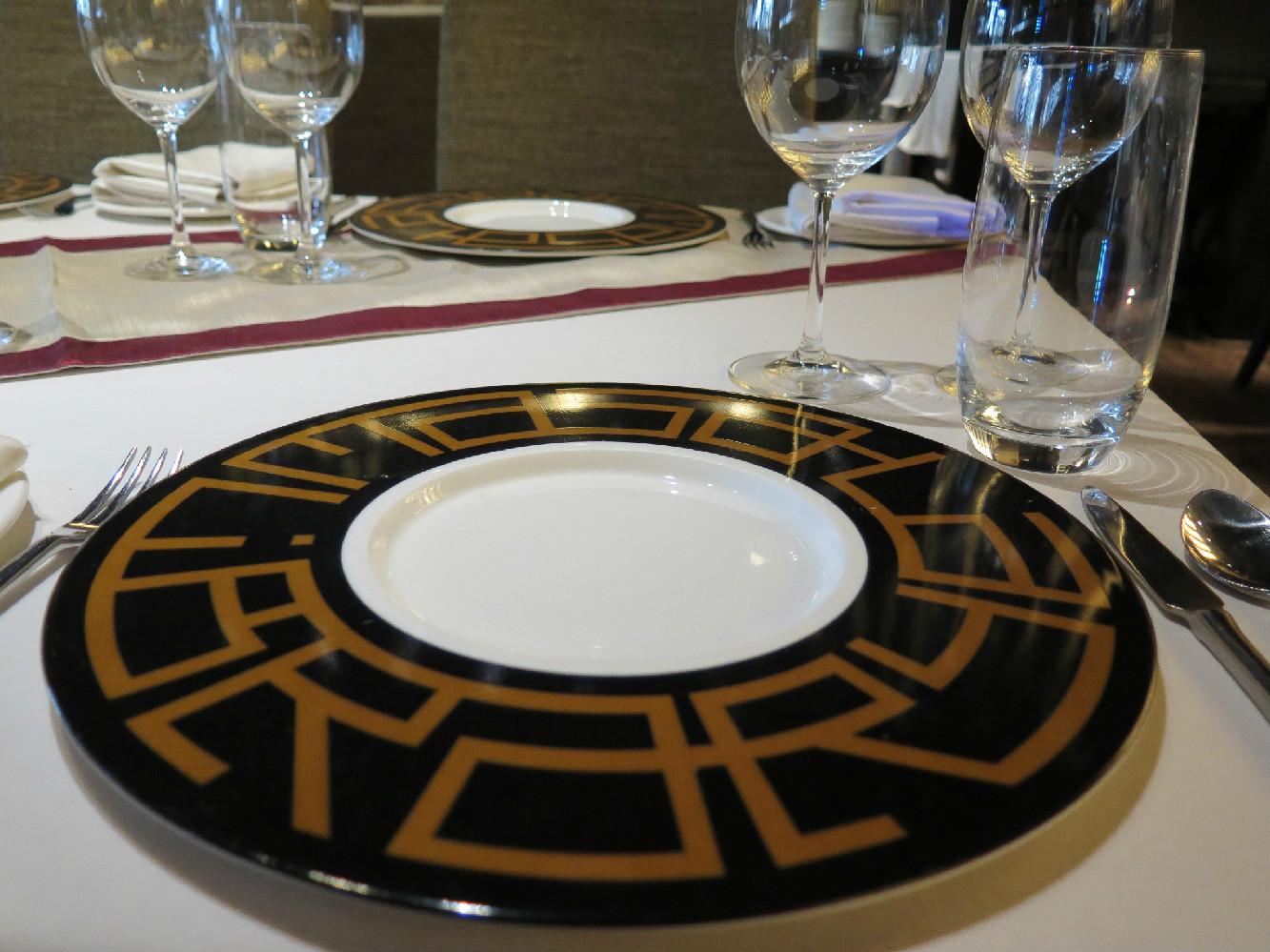
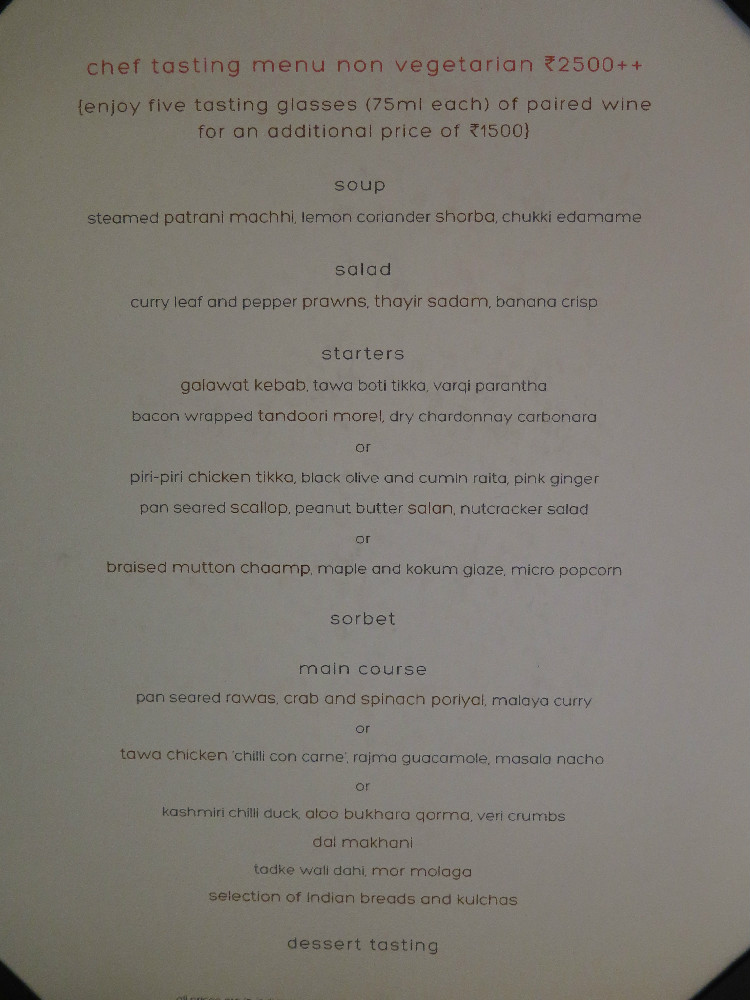
A finely sculpted porcelain dish , shaped as a fish, held a slab of white basa at the base of its hollow and my server drew up table-side to pour a lemon coriander broth that slowly submerged this piscine morsel . This interesting piece of theatre was a perfect way to commence the seven course degustation chosen that afternoon. On questioning I was informed that Parsis use a river fish for this dish but as Masala Library's corporate clients reportedly prefer basa ,the kitchen kowtows likewise. Basa is usually a hopeless specimen indiscriminately sold all over India to unimaginative buyers, but 'twas actually flavourful here, finely complemented by the mint-evocative pool in which it nestled.
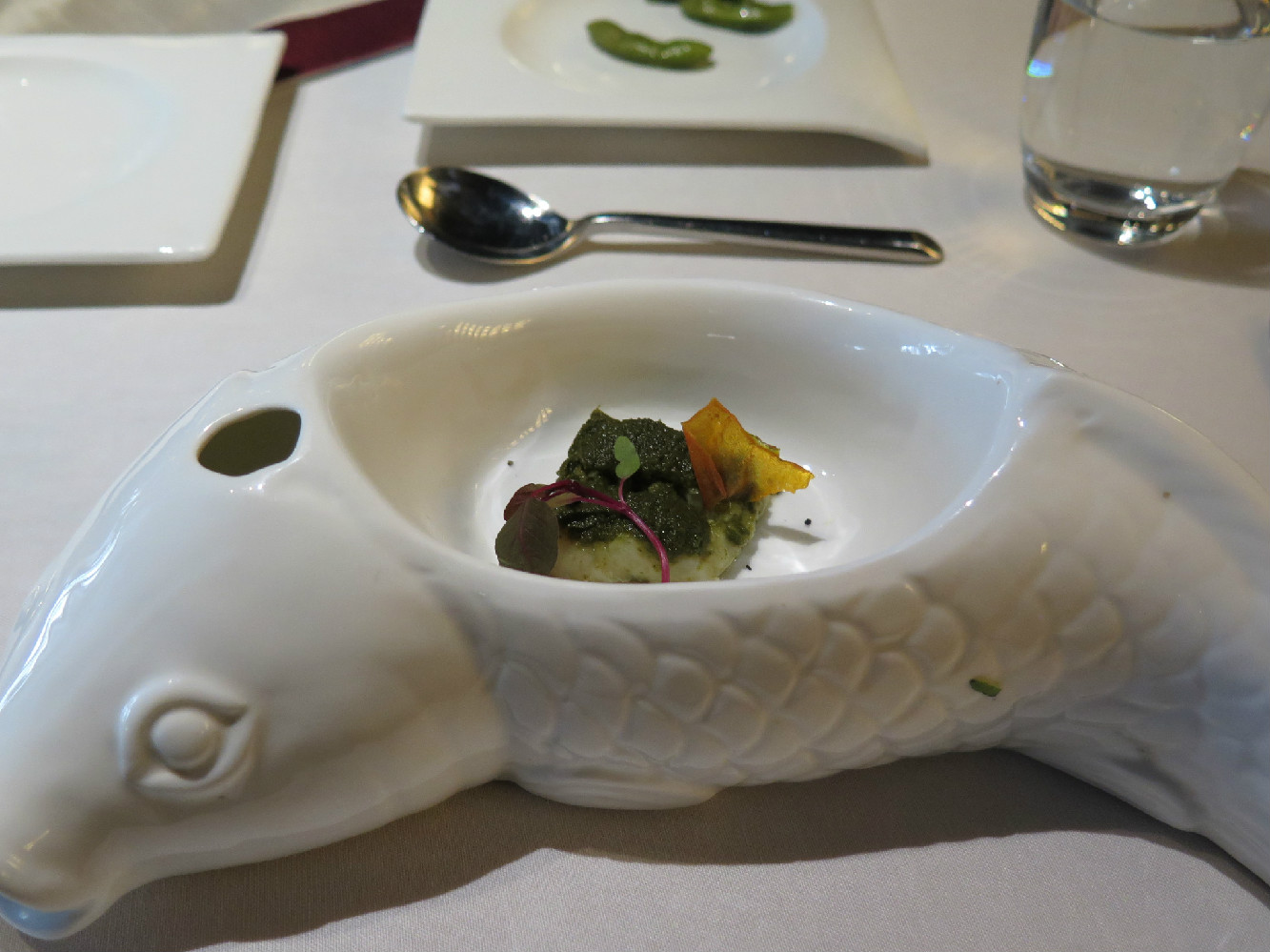
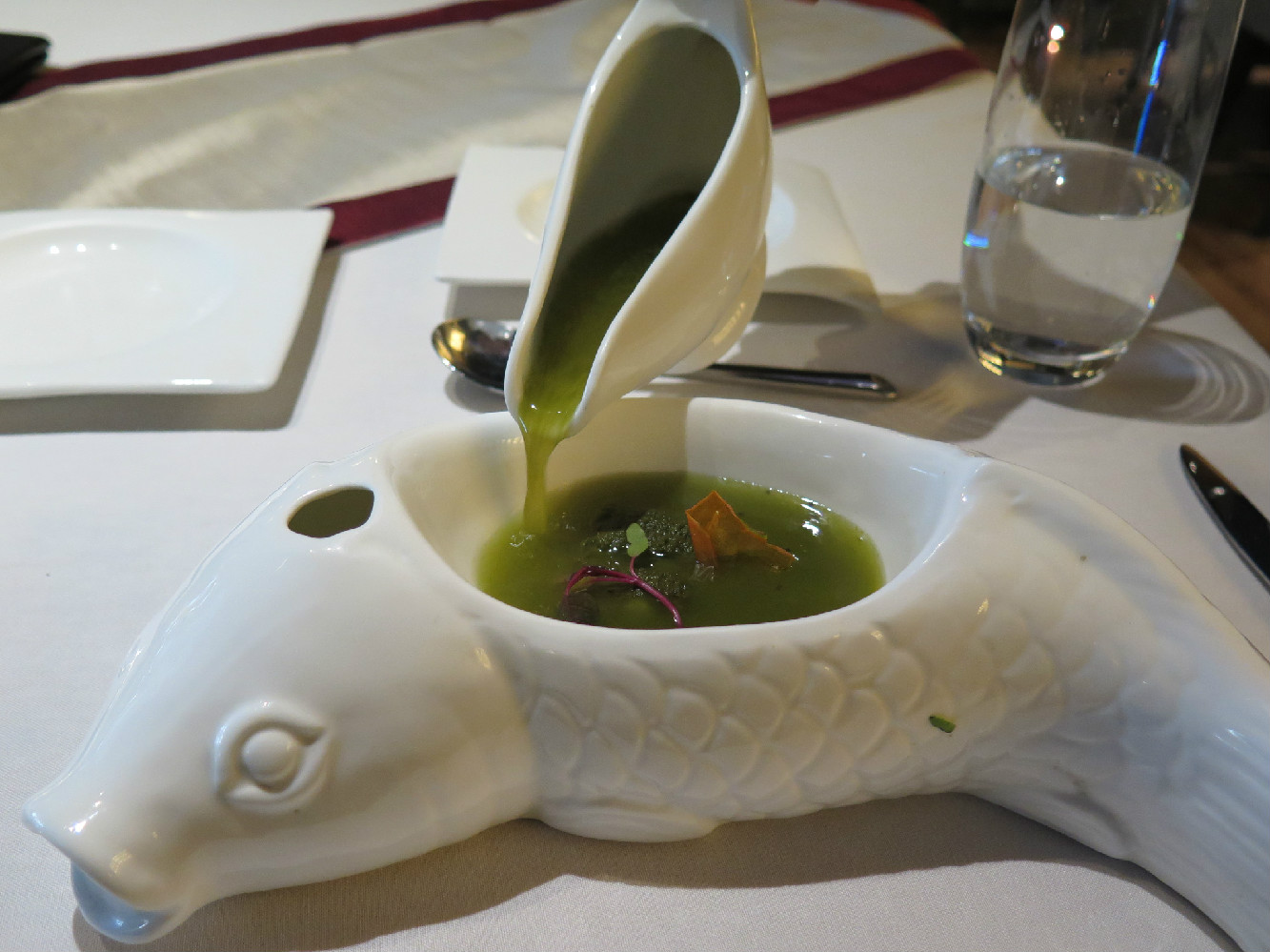
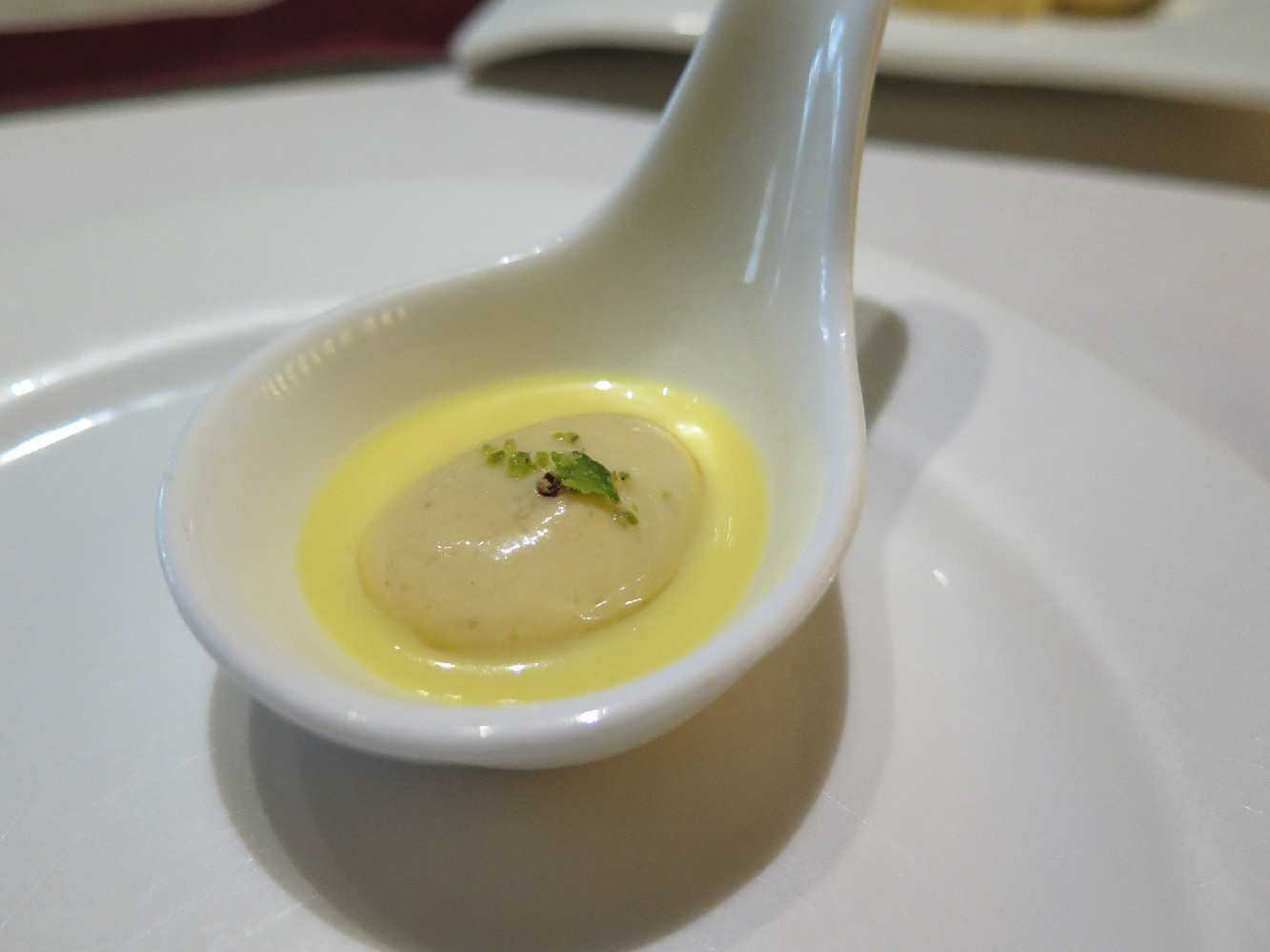
I had to wait until the third dish of the Next Day's lunch here, before I found another presentation that was similarly enjoyable. None of the Masala Library's 12 different offerings over 2 separate meals, adding up to Rs.8000 in total, were outstanding.
Masala Library's 'Thayir sadam' (curd rice, prawns with pepper and curry leaf, banana chips) was cleverly designed as a modernist spin on the South Indian classic of curd rice, spicy pickles and the crisp element of pappadum. But neither individual elements nor the blended whole gave rise to a neo-Carnatic symphony. They deserve full marks for the concept but how I wish the prawns and masalas were more flavourful , or the curd rice zingier.
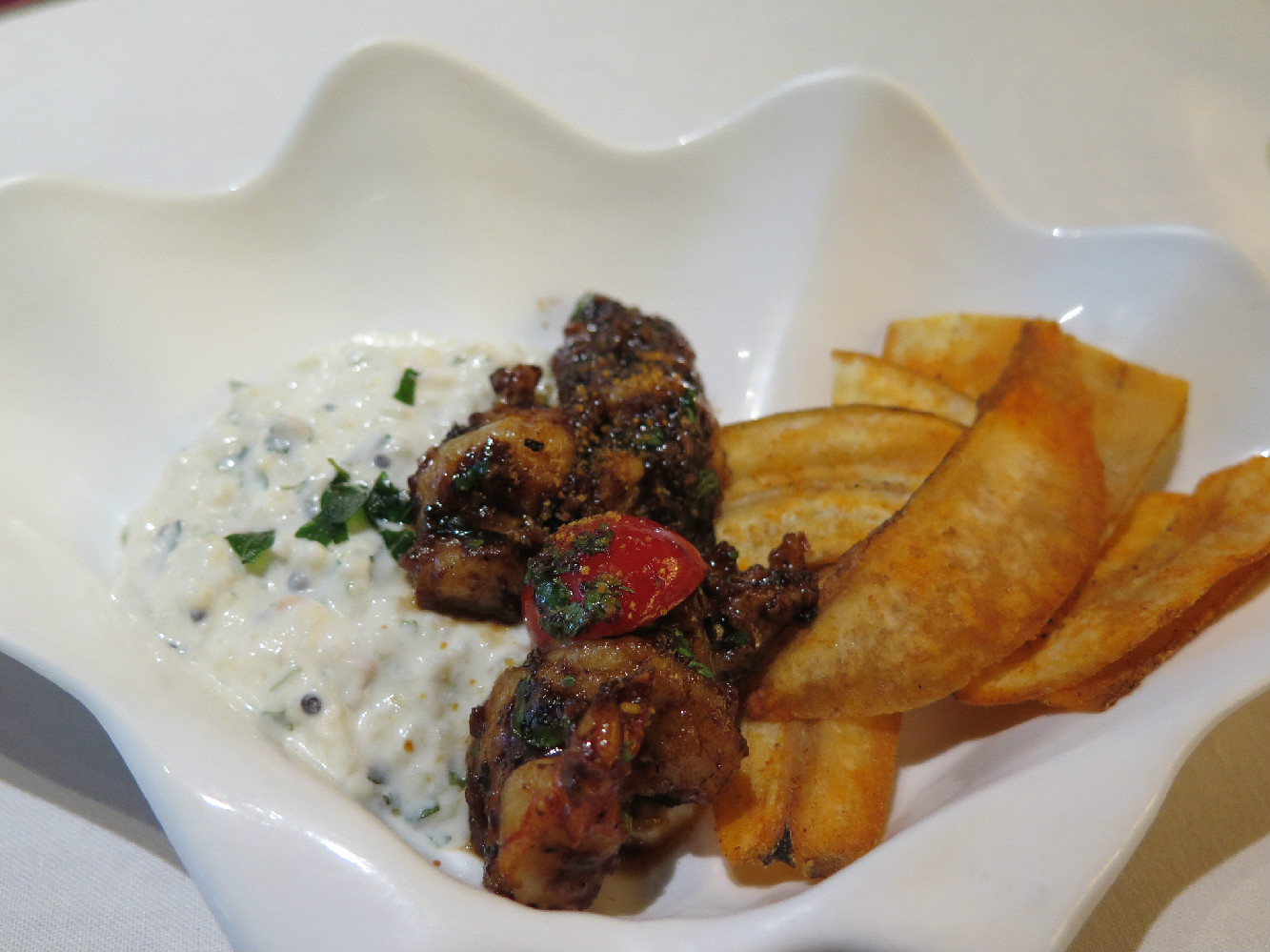
Chicken tikka piri piri had tender meat but was feebly flavoured - I've eaten at least twenty different chicken tikkas in my life better flavoured and better texured than this one. Why my critiquing instinct did not choose bacon wrapped tandoori morels over this one, fails me.
Galouti kebab - mashed with a complex masala - was a layered treat but lacked special re-interpretation of the template dish. You'll find many equally competent renditions of this all over select establishments in India and this version offered by the tasting menu is not what I came here to eat.
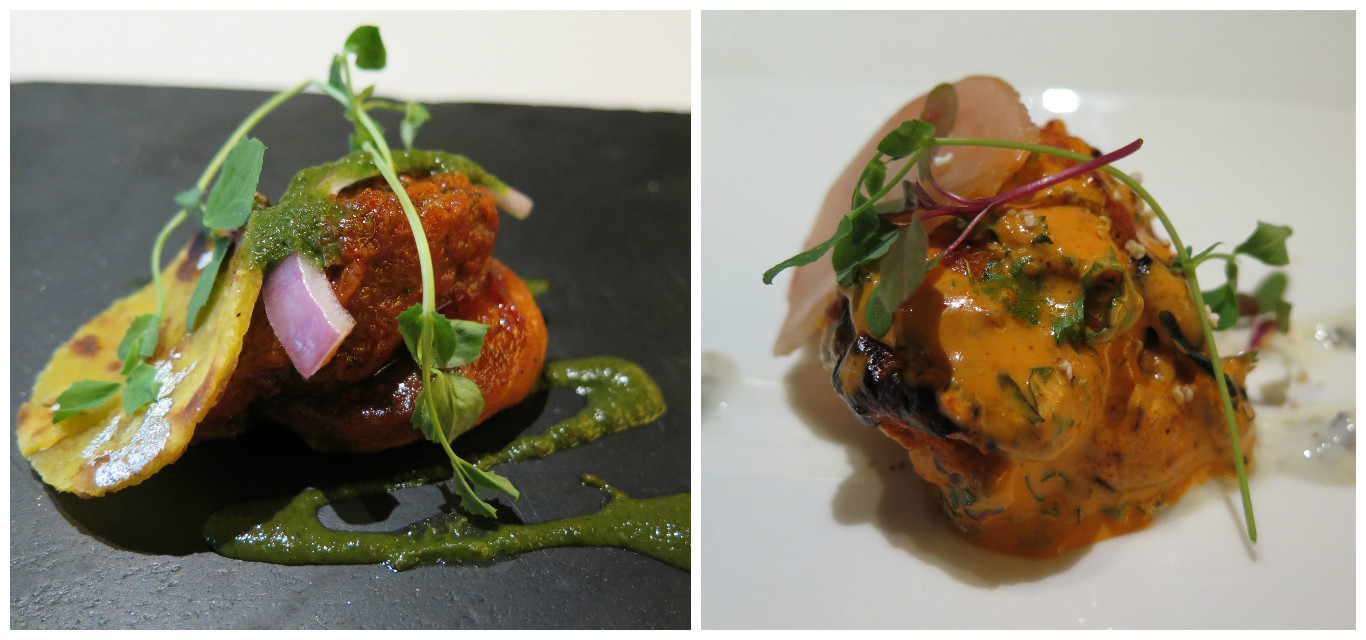
While attempting to cook Indian cuisine with world-cass modernist esthetics, a chef is faced with two avenues of synthesis. One : remain in India and reach out to the world and two : remain in Euramericana and look towards India. For Indian chefs, I advocate , quite paradoxically, the second ploy - from a background of Euro-centric cuisine , if they attempt to Indianize , I feel they will achieve a more successful degree of internationalization. The first gambit may risk the danger of Not stepping out of traditional India to a sufficient degree. Masala Library, alas, falls into the first trap often, and into claptrap occasionally.
Egg burji remains a superb modern Indian snack in which scrambled eggs are given a masala spin. In childhood, I tasted a fantabulous chunky version sporting off-white and green colours from Bangalore's Manipal hospital - a strange source of favourite food admittedly , but I have never since eaten such a moreish version of egg burji . Whether that legendary dish of yore had its taste amplified by my fevered dreams (which can easily happen in hospitals) or whether my memory from childhood has unnaturally magnified the flavour of that remembered zinger (you see this phenomenon in movies especially where a childhood showpiece fails to generate the same magic in adulthood) I am now no longer sure. Anyway, Masala Library's version mixes Surf into this scrambled poultry's Turf with a Chef-recommended Crab version.
The version placed before me , alas, was so run-of-the-mill in taste that it did not differ one bit from a regulation original . Mixing in petite chunks of sweet flavourful crab into egg burji is admittedly an idea with terrific potential but the marine element was a total phantom in the dish. But do not under-estimate the chefs here - they presumably realized this snafu at the last minute and in order to atone, parked a comely looking hollow crab-shell alongside the burji. I shuddered to think what the presentation would have entailed had this been a beef remix.
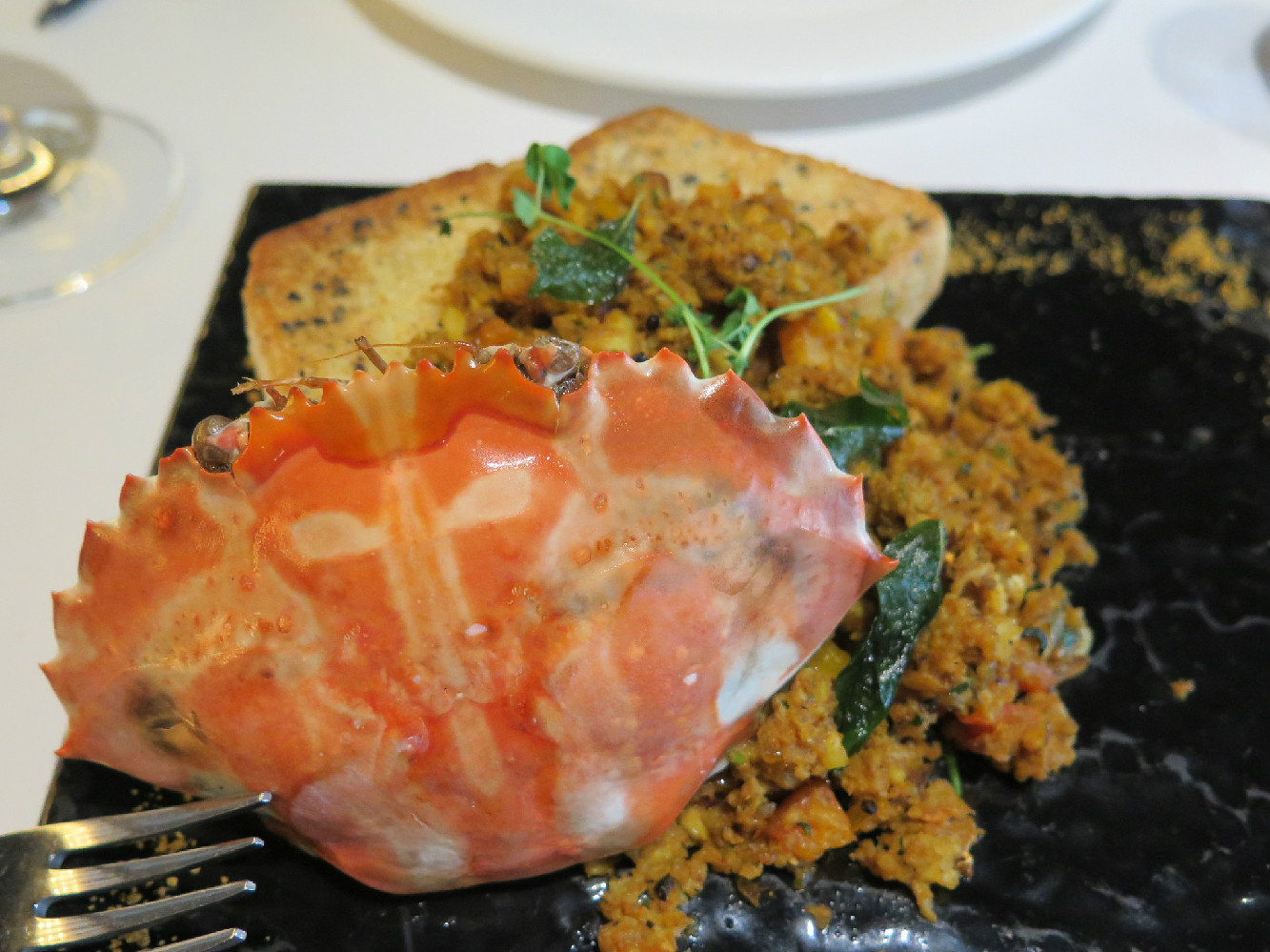
Mr.Khalid Mohamed - my nationally distinguished dining companion - declined a tasting of this - and I'm glad he did because I was seriously suspecting that a marginally talented adolescent , rather than an accomplished adult, had cooked this betraying burji.
The service staff had many members but as Mr.Mohamed correctly observed nonchalantly, they were average. On more than one occasion, multiple dishes would arrive when the situation on the table clearly showed that patrons would struggle to eat them all while they where still hot . This level of lack of consideration towards your patrons is a rookie common sense error which many so-called "elite" restaurants commit. The menu had proclaimed founder Jiggs Kalra as "the master-tastemaker to the nation". Jiggs Kalra ( a now-retired popular cuisine columnist whose cookbook 'Prashad' inspired many chefs across the nation to re-create a range of Indian recipes) the staff informed me, was now too old and hence no longer involved in the day-to-day running of the kitchen. His son Zorawar who has now taken over,was nowhere to be seen. Executive Chef Saurab Udinia, I was informed , was not in town. This illuminates us apropos a lot of the restaurant's lack of character. Why bother to sweat fine service and nuanced food when the marquee "chef" is, after all, the "master-tastemaker to the nation"? He seems to have been inducted into the International Food & Beverage Hall of Fame - reportedly the first Asian to have this honour. I wasn't surprised I had never before heard of this society.
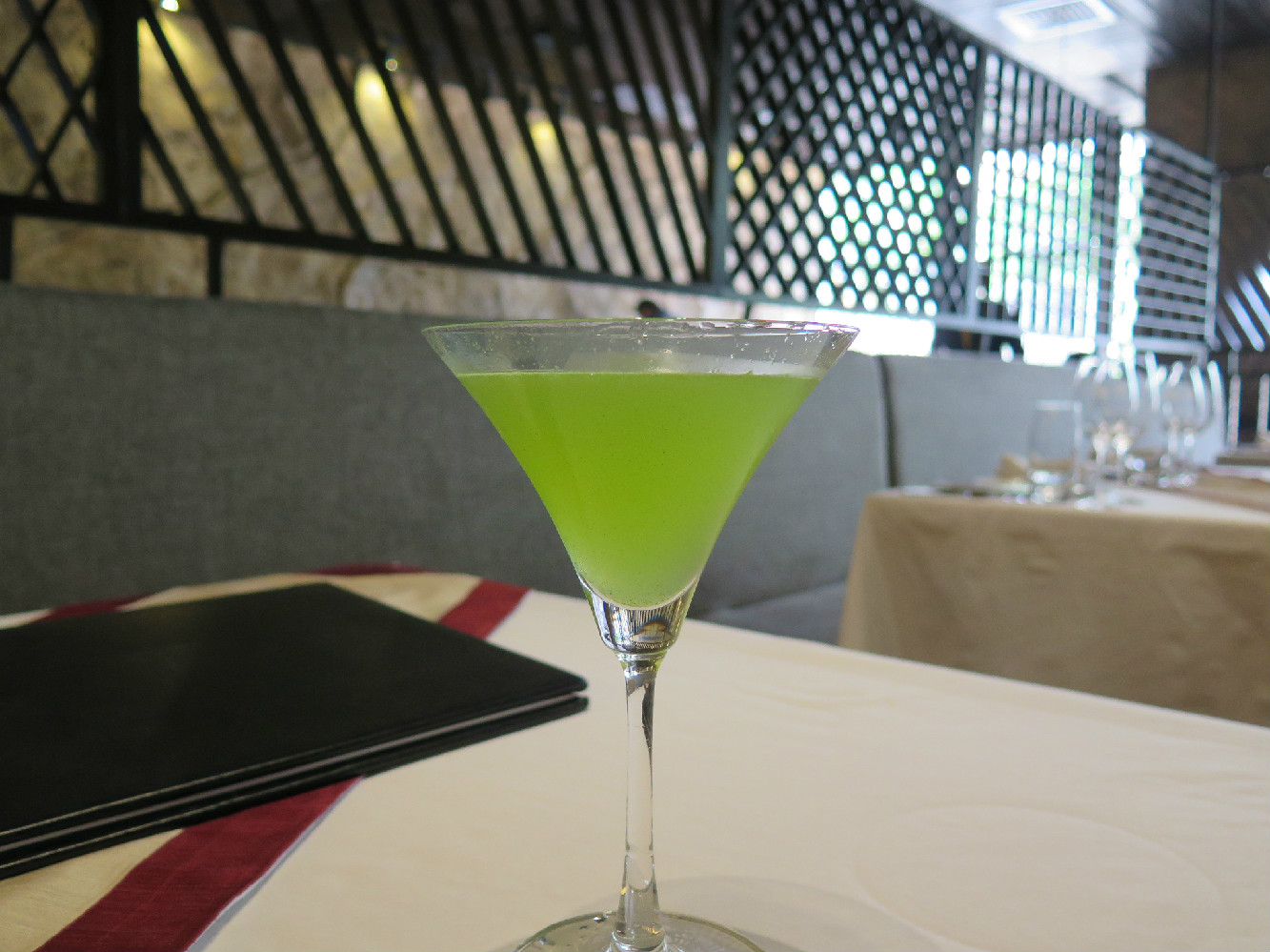
The ambience is neat and nominally elegant but it is ultimately regulation stuff with no special touches to mark it out as a unique effort in decor. You will find hundreds of spaces like this all over India - the upmarket restaurant where a meal for two can easily climb upwards of Rs.3000.
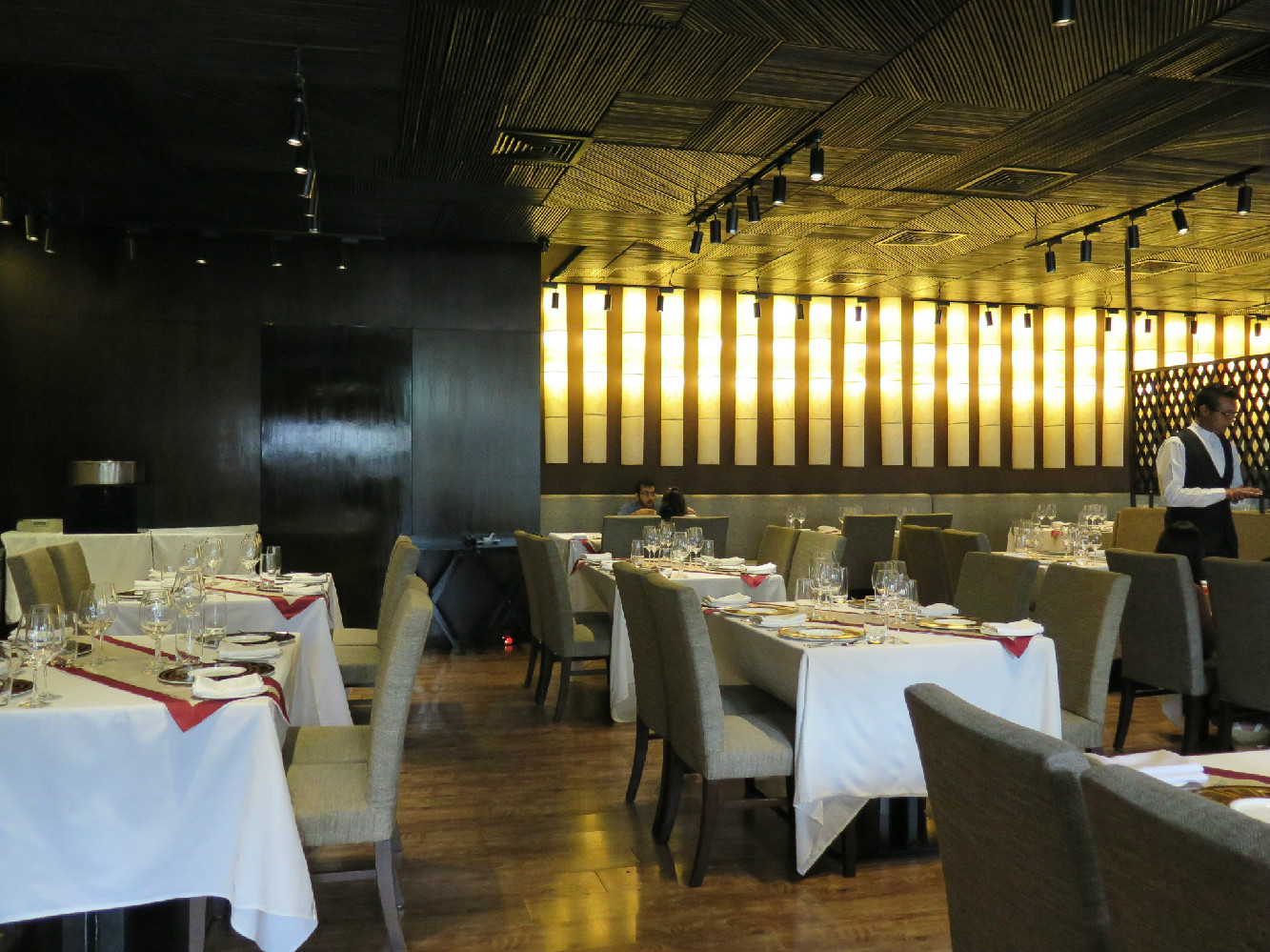
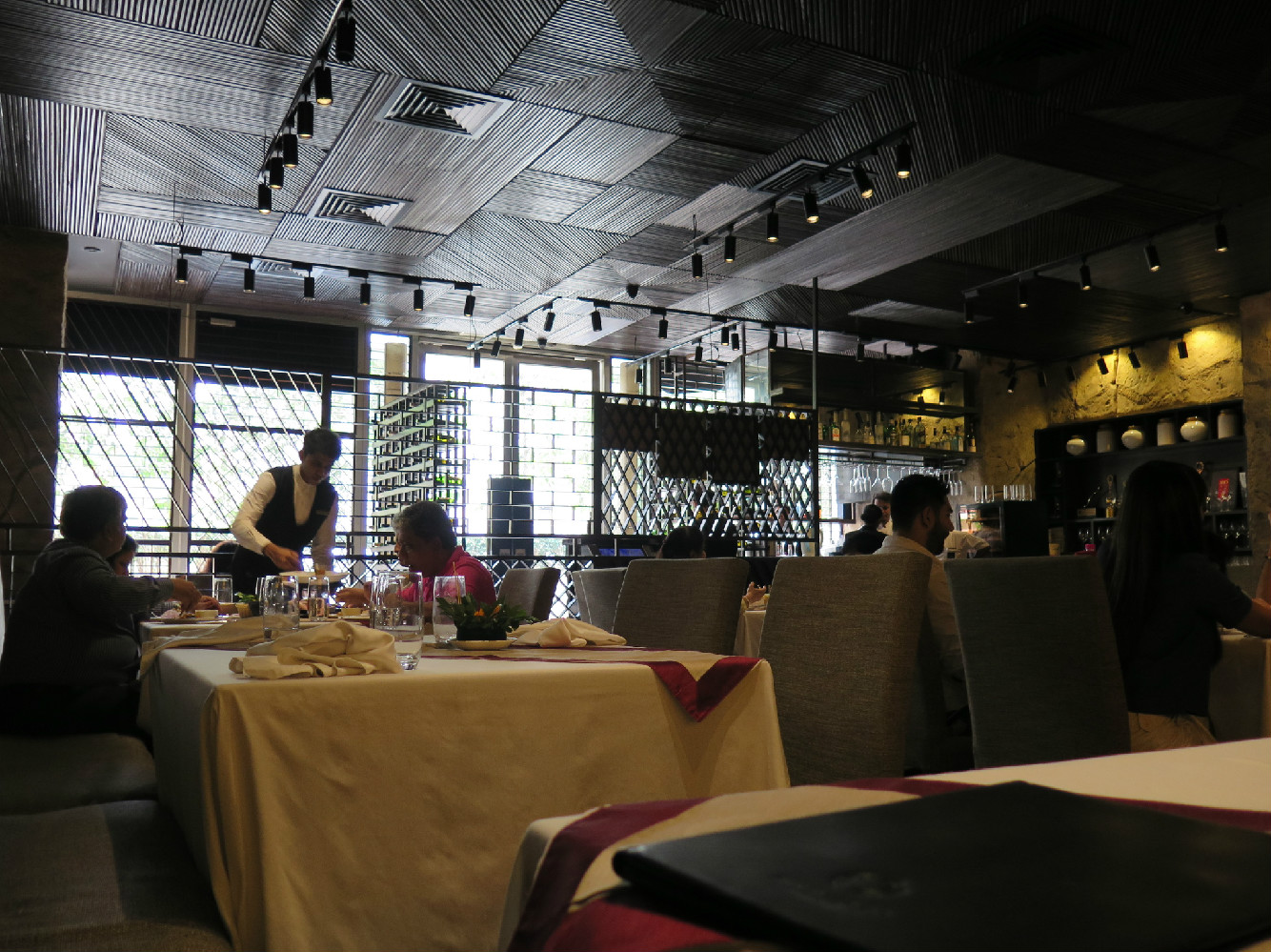
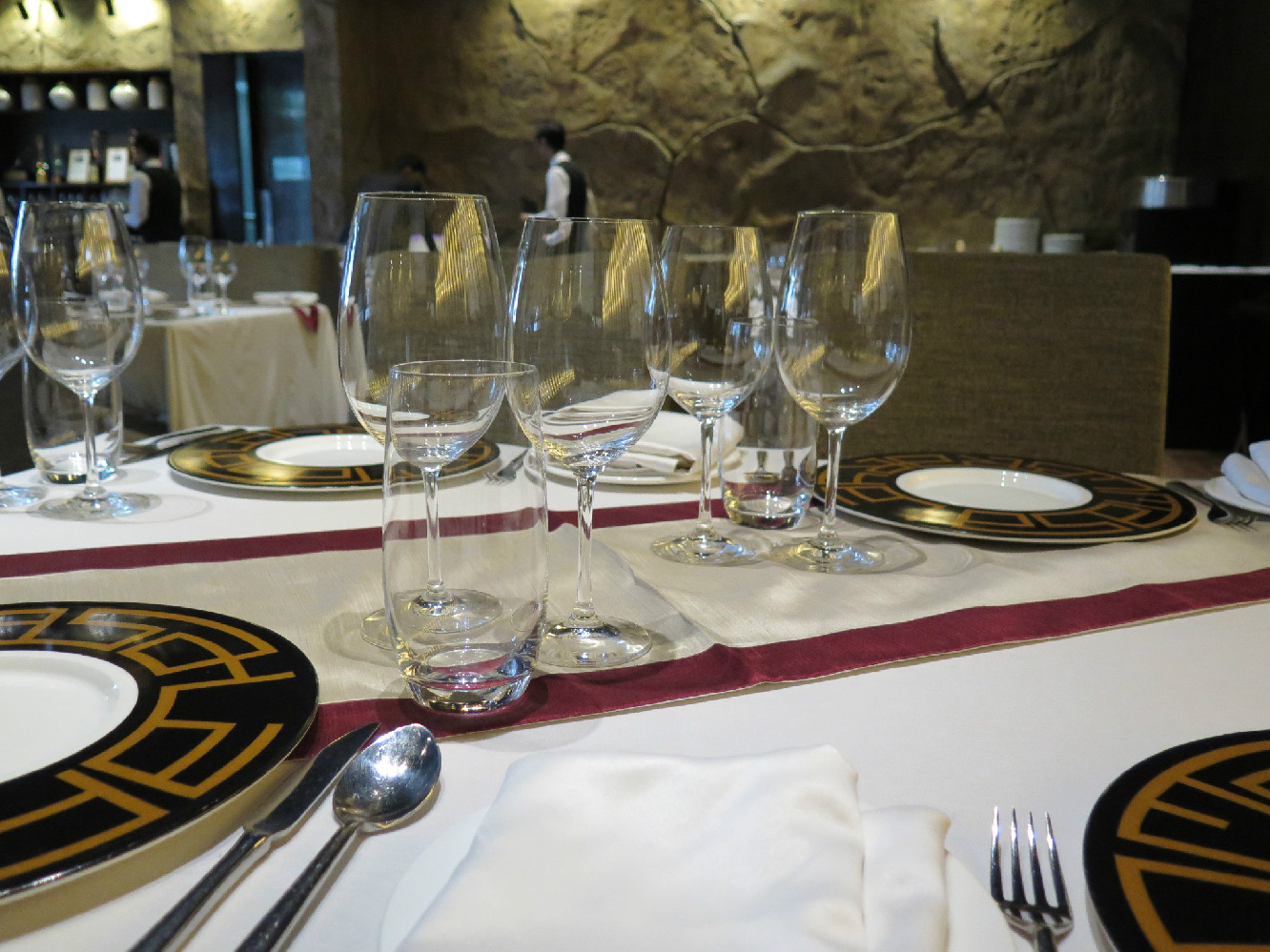
The much-praised Mutton champ looked like a food item out of a grisly alien's kitchen (one has to admire the audacity of the presentation), but the meat was tender. The merits stopped there - the western element of maple and the Indian contribution of kokum gave it a sweet vaguely medicinal taste which failed to impress on multiple tastings.
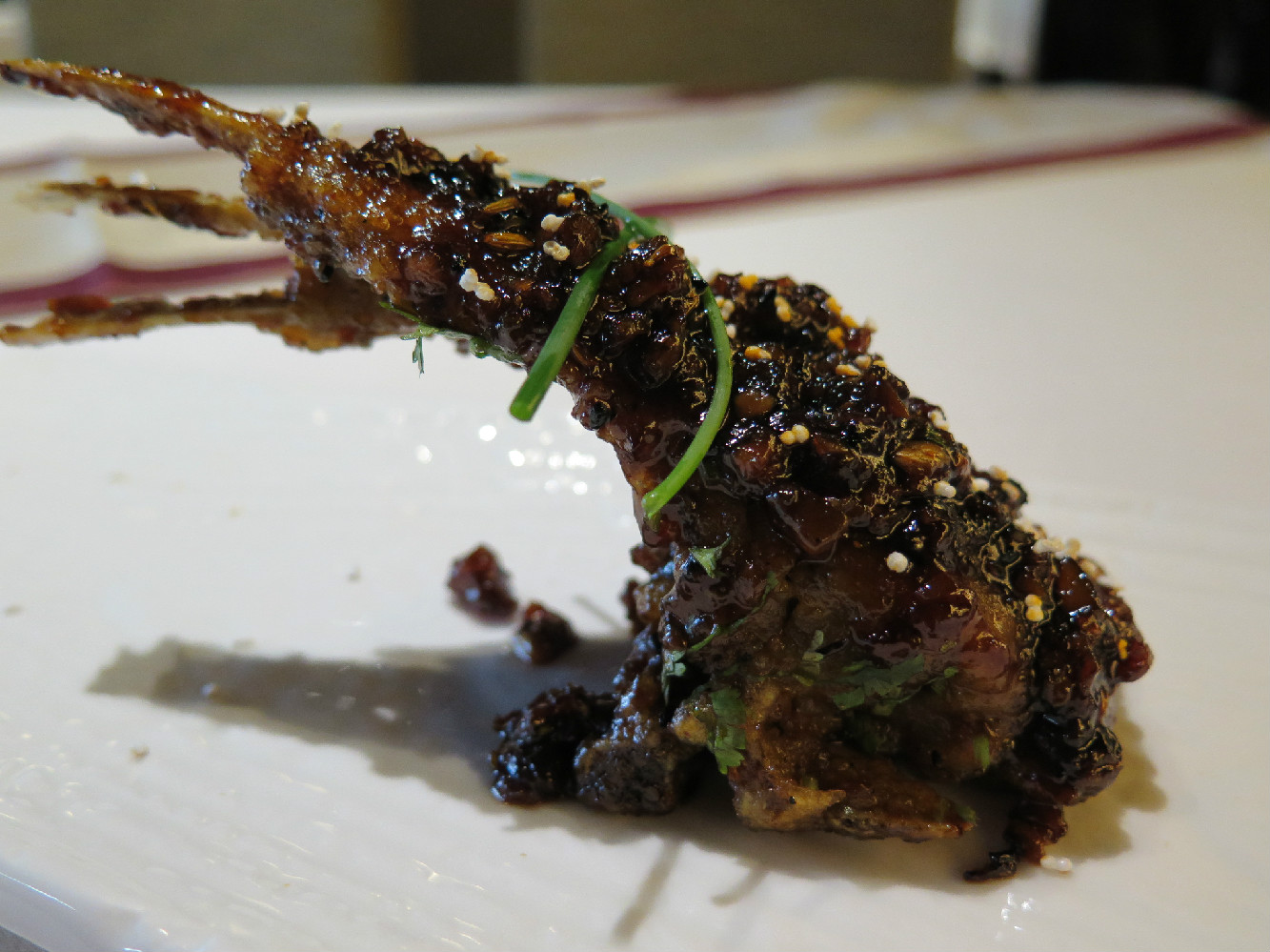
Rawas fish coated with an 'orange pudi' (a garlic chilli coating) served with an innocuous spinach-'n'-crab accoutrement , and a docile thick raw-mango sauce, just didn't harmonize beautifully. The blended forkfuls often tasted like a stodgy mish-mash. Overall flavour miscalibration aside, this dish's fundamental flaw was that the fish per se had little taste.
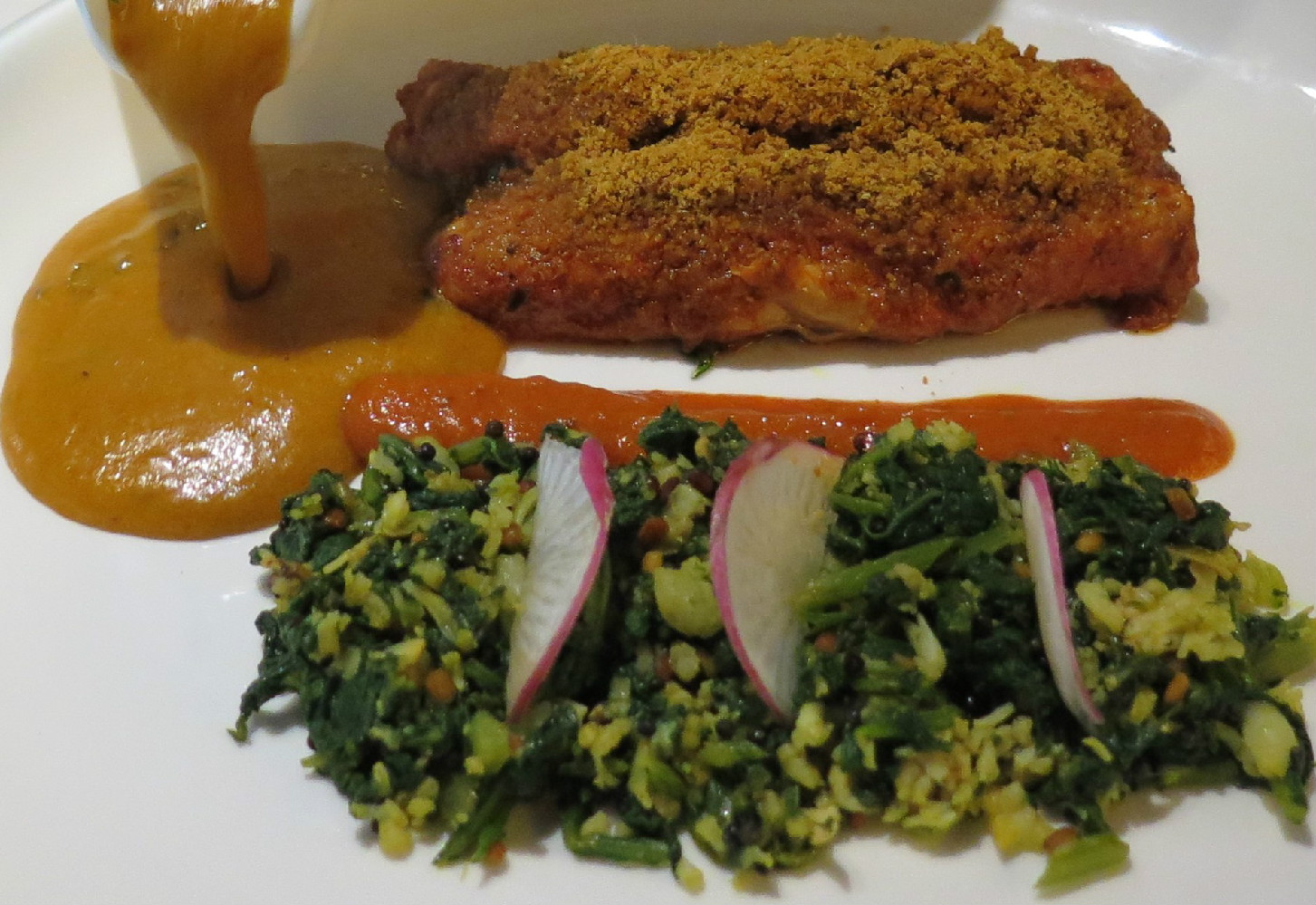
Lamb shank was covered with thick masala and looked like it would be an aggressively spiced affair but as a pleasant surprise, the masala was mellow with a welcome addition of some duclet tones, and the meat , though not surpassingly tender, was soft. This good impression was not sustained by Kashmiri Chilli Duck . The shredded duck meat eschewed slick satisfying mouthfeel and far from witnessing any bravura use of chilli, what we tasted was an under-powered rendition vaguely reminiscent of barbecued shredded duck, paired unconvincingly with plum sauce.

Service was the weakest point of my overall ehsaas here. Water-glasses were not filled with regularity, nor was there a continuity in the same chief waitstaff supervising your table. The manager did come over over and we had pleasant chat but that marked the end of the managerial attention. There was no send-off at all, gracious or otherwise, at the afternoon's denouement - it felt as a hollow commercial encounter.
Sweet comfort was not exactly lavished on by desserts. Caviar jalebi was considerably less enchanting than the pleasant golden pleasure of an actual jalebi and its companion of pistachio rabri was pedestrian. In 'Tea Ice-cream' a welcome taste of tea did not suffuse the ice-cream but this did not stop Mr.Mohamed from stating that it was the best dish of the afternoon.
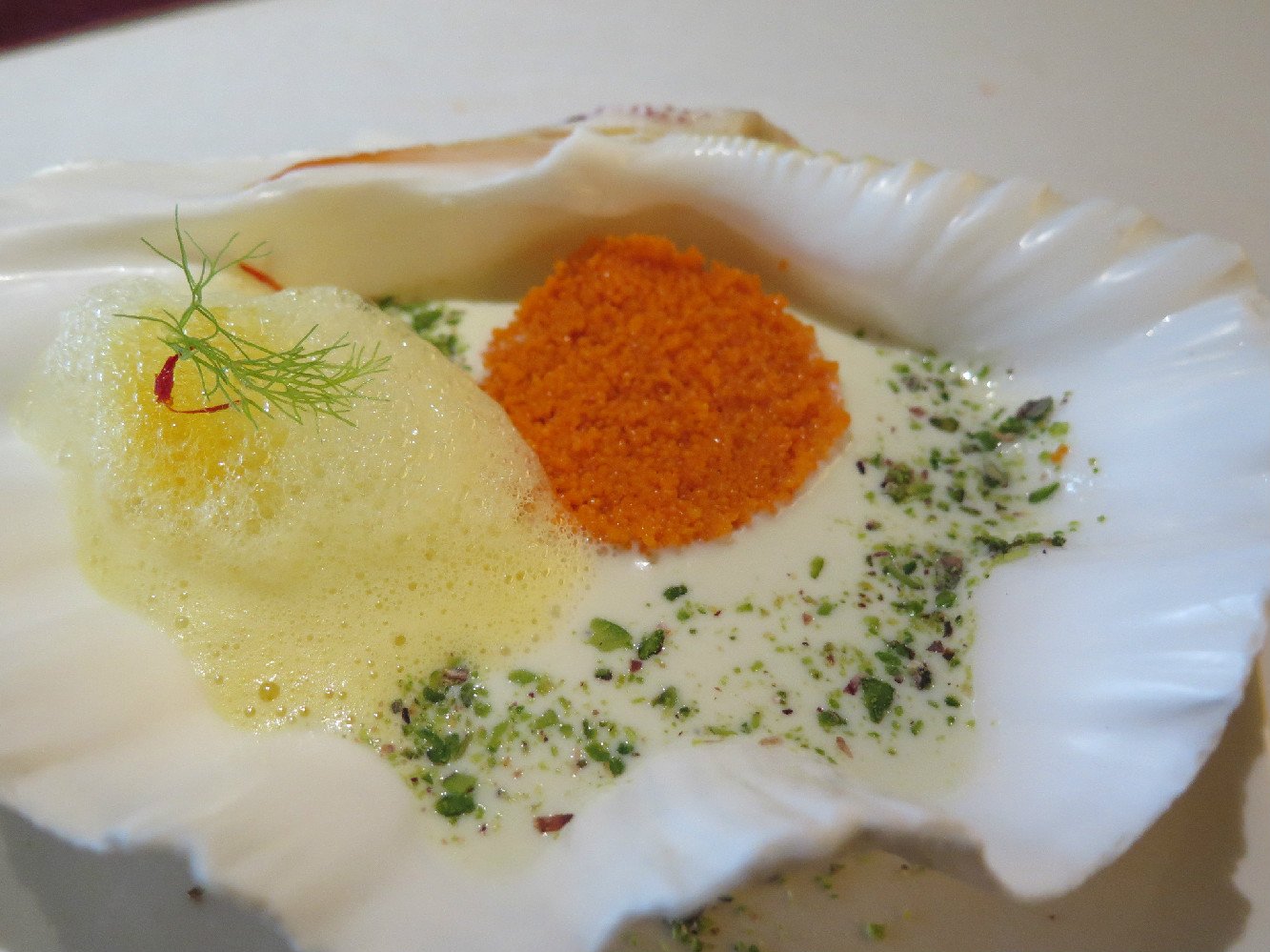
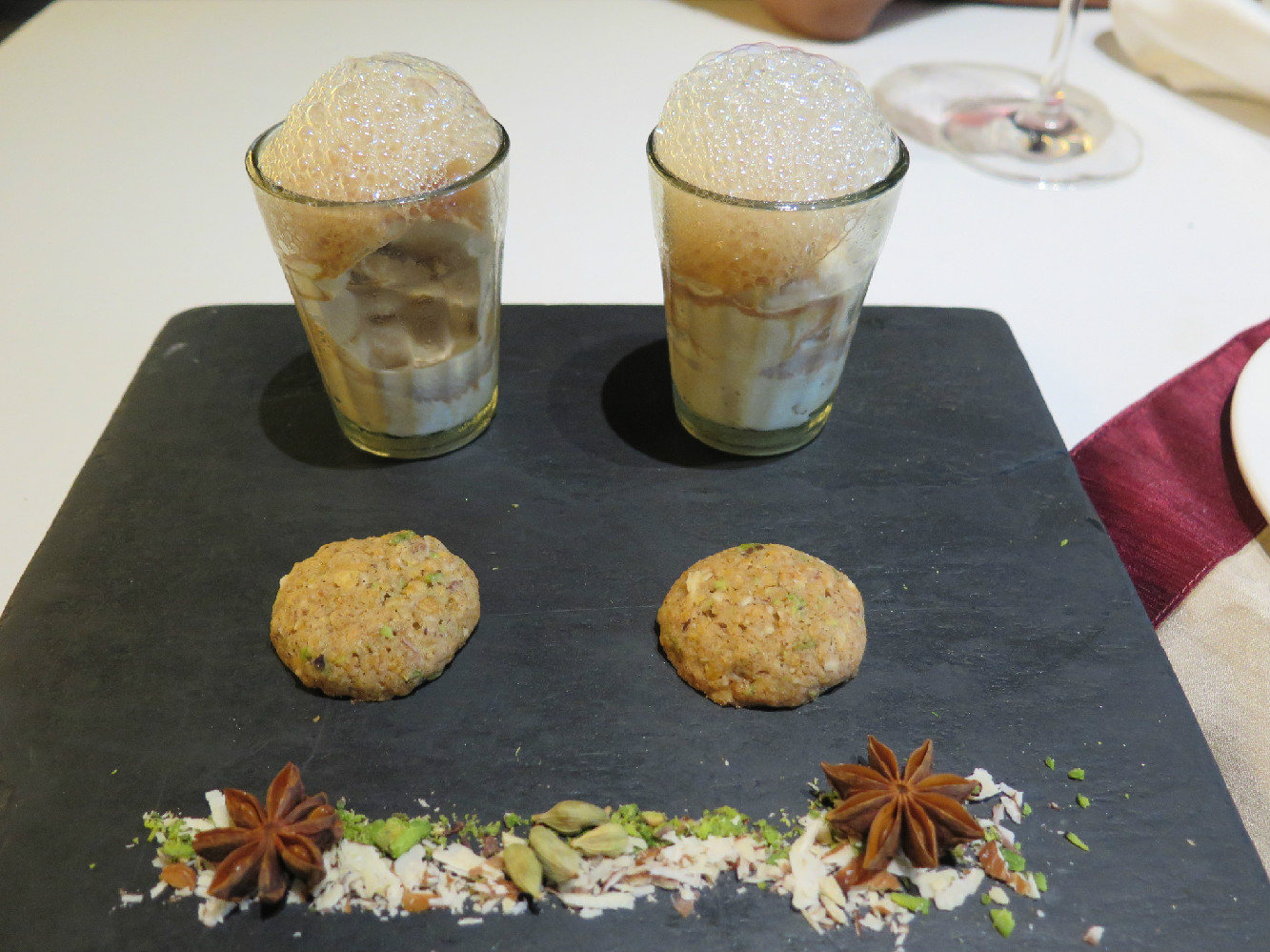
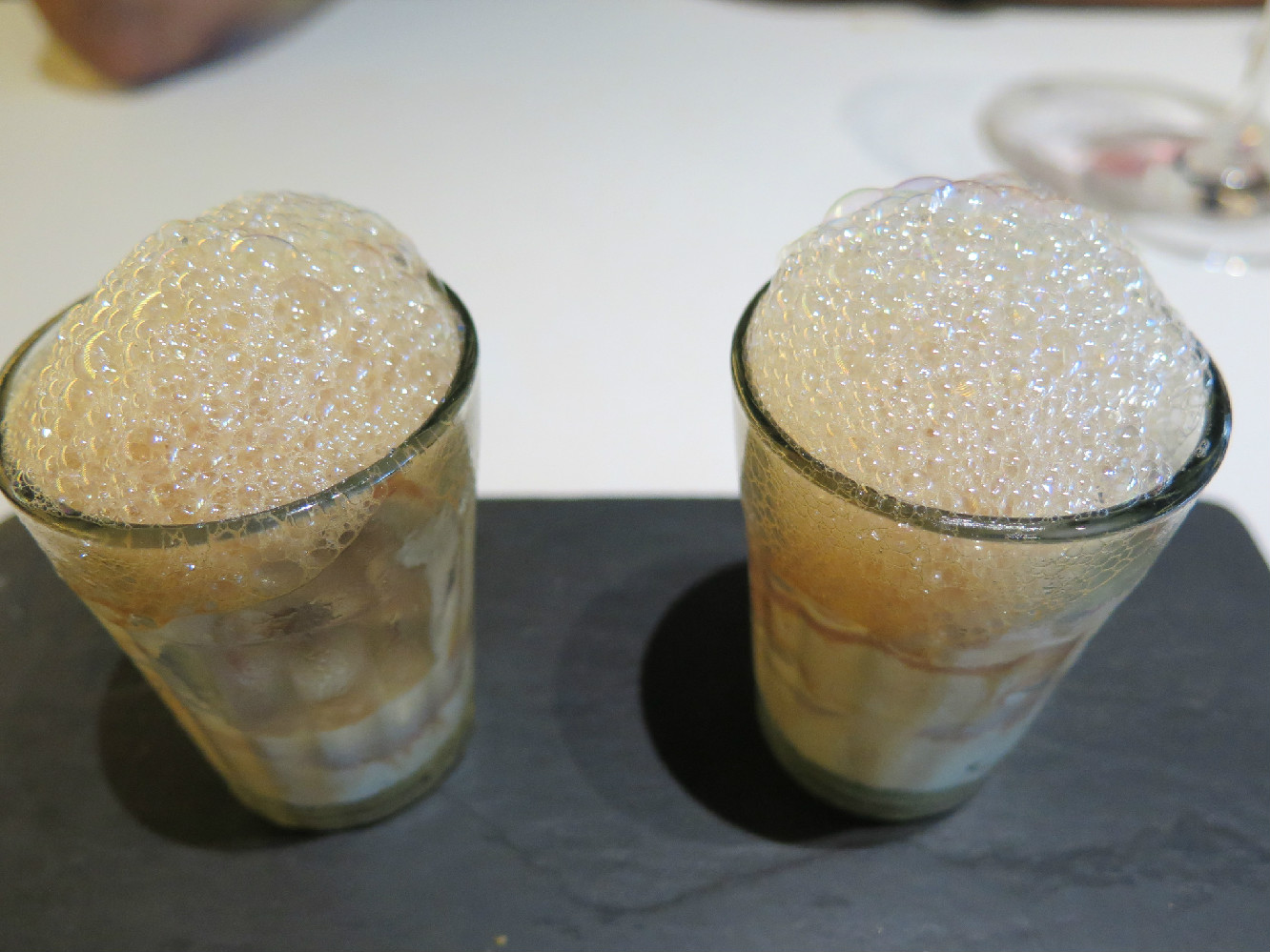
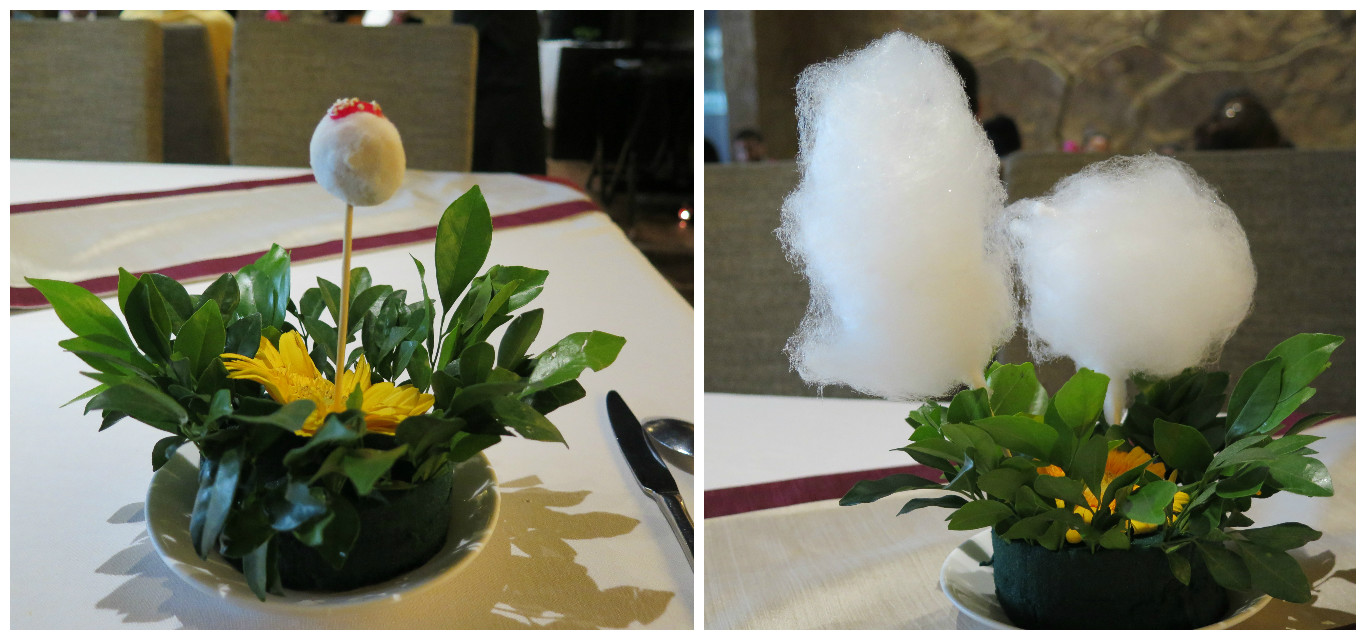
Numero Uno film critic Mr.Mohamed gives us various mugshots while eating his Paan Cotton Candy (I enjoyed both the sweet treat and his nutty theatrics).
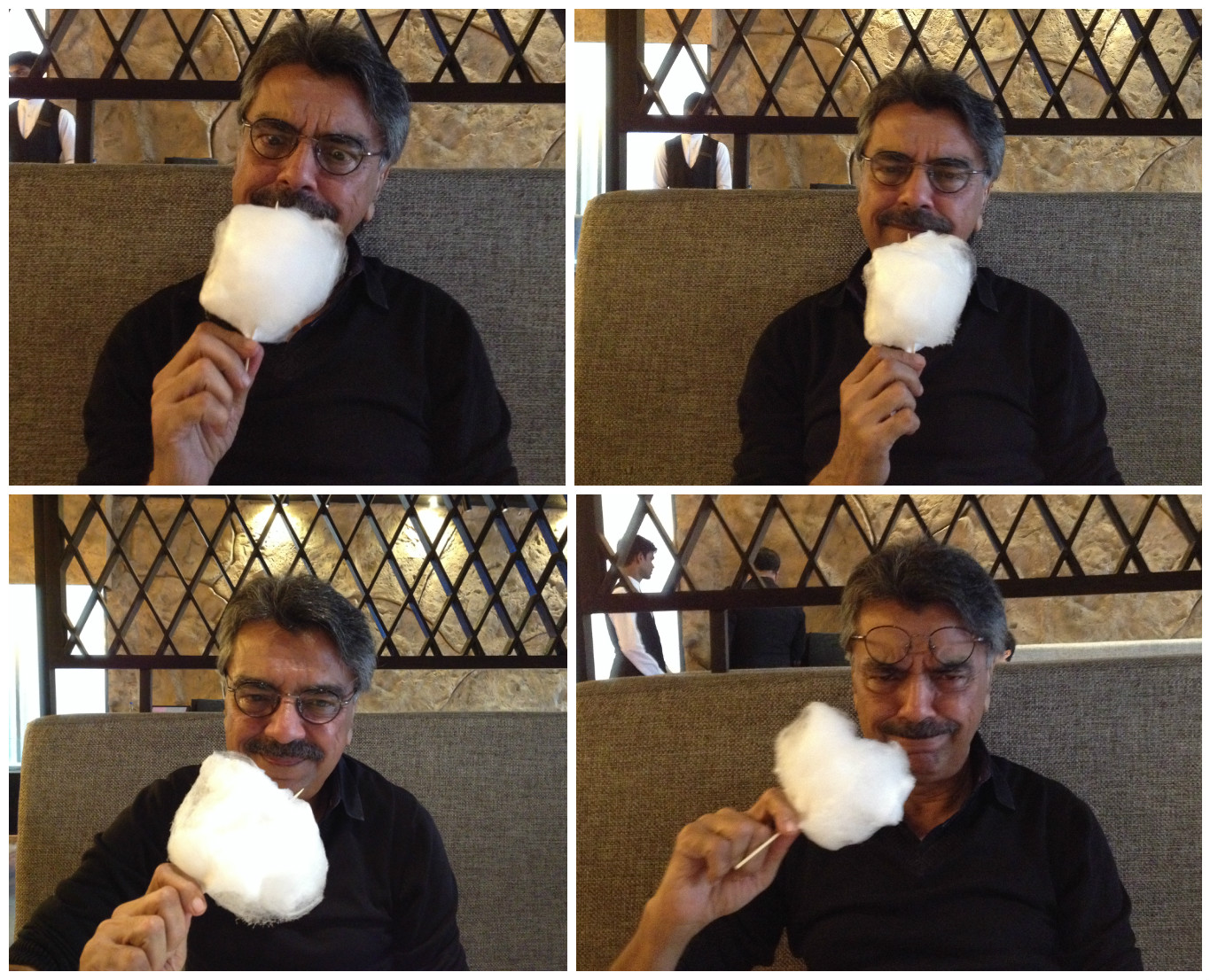
We may consider 'modernist Indian cuisine' to connote Indian flavours handled with international techniques, novel gestalts and taste juxtapositions that are a joyous change from the usual. Masala library's experiments with taste left me mostly cold, their remixes were often no different from the originals, and their techniques don't come anywhere close to being revolutionary. The food is not bad of course , but I was hoping for the word 'spectacular'. Unless there is a change in the kitchen leadership and the concept-design team, I don't see this evolving into a truly cutting-edge restaurant.
UPN
UPNWORLD welcomes your comments.

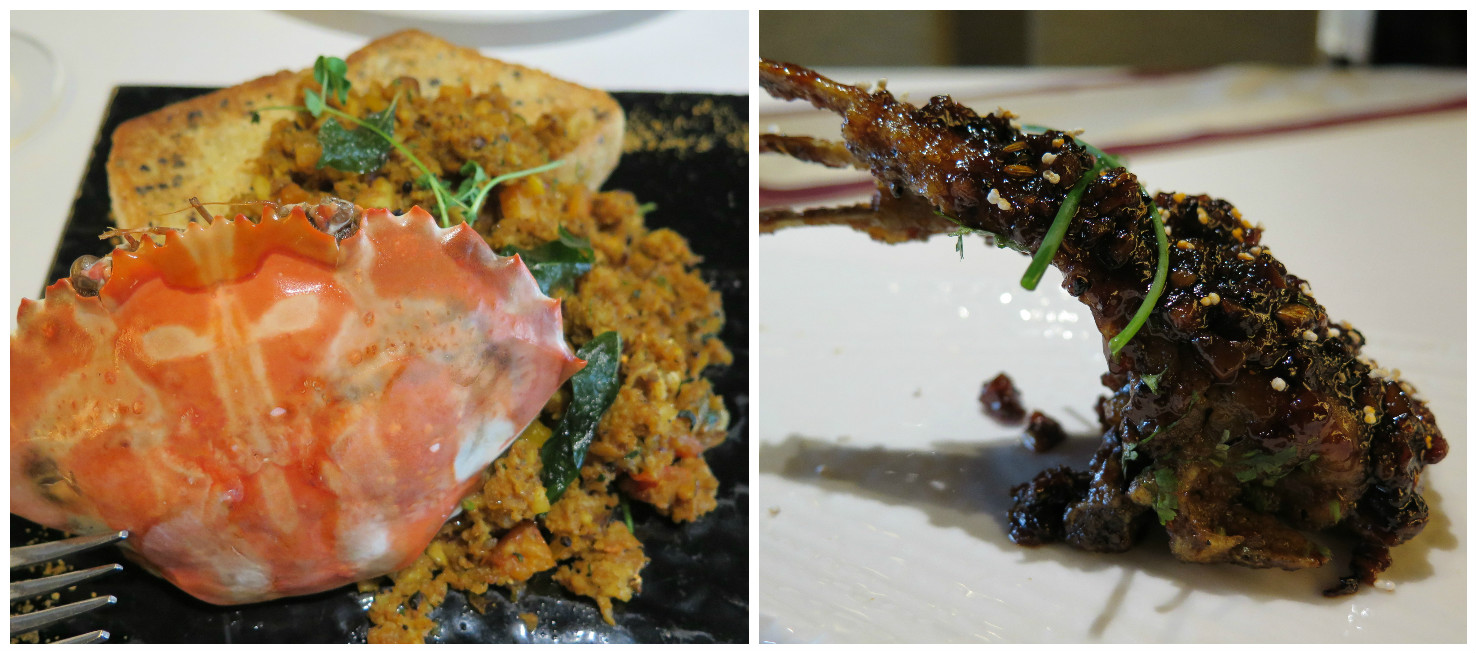




0 COMMENTS
WRITE COMMENT